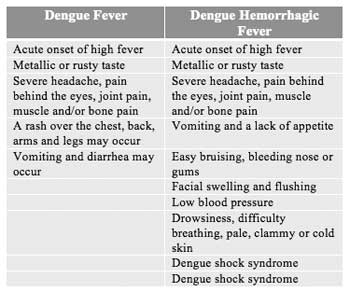Dengue fever is a disease we’ve all heard about; nonetheless, not all of us have given it the importance it deserves. As a result of the lack of information, dengue fever cases have started to increase, making many Costa Ricans its new victims.
In June’s Boletín de Vigilancia de la Salud, Costa Rica 2010 (Costa Rica’s 2010 Health Surveillance Bulletin) the Ministerio de Salud reports that, just in the first five months of 2010, 7,324 cases of dengue fever have been registered throughout the country, representing a 408,6% increase when compared to the cases that were registered during the same five-month period in 2009. Currently, the Chorotega region is the most affected, with 1,948 cases (which represent 26,6% of the country’s total cases) and within it, the most affected areas are: Abangares (458), Carrillo (413), Cañas (321), Santa Cruz (384) and the Nandayure area (144), which experienced an outbreak during the first weeks of June. Cases in the region have continued to increase significantly and, as if this was not enough, a case of dengue hemorrhagic fever has been reported in Abangares and a possible death due to it is currently under investigation.
Dengue fever is a potentially life-threatening viral disease transmitted by the Aedes aegypti mosquito. The dark-colored mosquito has distinctive white stripe markings on its body and legs and it breeds in stagnant water. The disease is transmitted when an Aedes mosquito feeds off the blood of an infected person and then bites another one, infecting them with the virus. Can this person infect other people? No, it is not contagious and, in the vast majority of cases, the only way of becoming infected is through a mosquito bite.
Once a person has been bitten by an infected mosquito (the bite is usually located around the ankles, inside shirt sleeves or on the back of the neck), the virus starts to multiply in the host organism, taking 5 to 8 days after the mosquito bite for symptoms to appear. If this is the first time that the person is bitten by an infected mosquito a disease known as dengue fever will develop (refer to How to Distinguish Between Dengue Fever and Dengue Hemorrhagic Fever?). Once this infection has passed, the person will not be reinfected by the same serotype; however, there are 4 different serotypes, out of which 3 are currently circulating in Costa Rica. If you are bitten by a mosquito infected with a different serotype and become reinfected, you may develop dengue hemorrhagic fever (DHF), which causes severe, life-threatening symptoms that require immediate medical attention.
How to Distinguish Between Dengue Fever and Dengue Hemorrhagic Fever?
By Francisco Renick, M.D.
How can you distinguish between the symptoms of the dengue fever and the dengue hemorrhagic fever? Those who have experienced previous infections are at greater risk for dengue hemorrhagic fever; however, since some never have significant symptoms or these are mild, they do not know that they’ve had dengue fever and are therefore unaware of their increased risk.
Here is a quick guide of the most common symptoms for each type of dengue, but remember, when in doubt, it is best to seek medical care immediately.

|
|
|
Let’s all Join in the Fight Against Dengue Fever! Practice these guidelines and help eliminate the Aedes
mosquito’s breeding sites from your home and community
By María José Zamora, M.D.
In your home:
• Cover all containers that are used for water storage purposes.
• Remove all containers, pails, bottles, old tires, flower vases and pots, toys, pet and/or animal water dishes where rainwater may accumulate.
• Clean and repair your home or workplace’s roof gutters.
• Wash and scrub all sinks with a brush, keeping the drains clear at all times.
• Cover and fill any holes on walls, trees or construction blocks with cement or sand. Also, fill any unused septic tanks, drains or latrines with soil in order to prevent the accumulation of stagnant water.
• Substitute the water in your flower vases or pots for sand or soil.
• Apply a household insecticide to all corners and dark places in your home. Remember to apply it under the beds and behind large furniture.
In your community:
• Keep all vacant lots clean and cared for, avoiding overgrown plants and grass where water may accumulate, making this the ideal breeding site for the mosquito.
• Drill holes in tires used at children’s playgrounds in order to avoid the accumulation of water inside.
• Clean all ditches and drains to prevent fallen leaves from blocking them.
• Be aware of ongoing tire collection campaigns, such as the ones being organized by the Caja Costarricense de Seguro Social, Riteve and several private companies, so that you may dispose of them in an adequate way.
• Teach children and other community members about the importance of their role within the community’s health, showing them actions that they can take in order to prevent the mosquito from breeding and thereby, the dengue fever from spreading.
For the health and well-being of our family and community, let’s all join in now in the fight against this disease!
|

